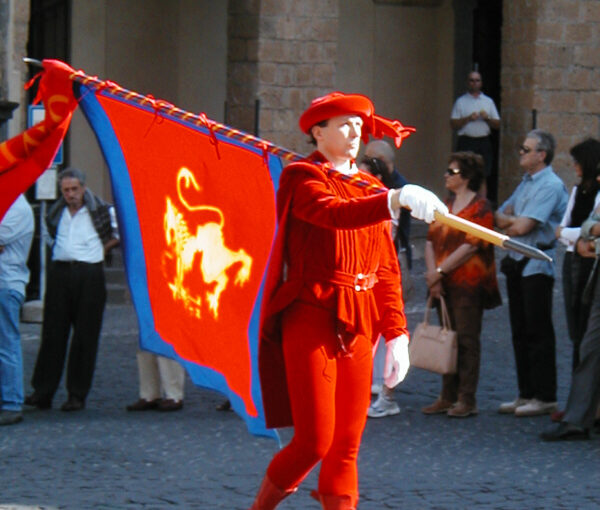Tuesday, June 21
I went to bed around midnight and, faced with a sensation of balancing on the edge of a crater (which, with this mattress is accurate) was up at 03:30. No surprise, really, as I slept so much yesterday, and all of it sweet beyond description.
My dream before I woke yesterday morning was interesting. I have a recurring dream of having forgotten to check out of a hotel and not discovering it until the bill has become astronomically high. Yesterday’s variation was that I had checked myself in to take a nap, and when I finally found someone to pay for the privilege, they wouldn’t take my money. Oooo! What does it all mean?
I returned to the lunar landscape of my mattress at around 04:30 and slept like a baby for five hours.
We walked the sagrato with difficulty, however around the house there were lots of little things that were easier today than yesterday: shifting weight, adjust feet positions, initiating movement. Friend reminds me that our connection is as real as we make it, in the way that many of us talk with deceased loved ones, but that I must try to commune with love and joy rather than as a means of activating the striatum.
The discomfort gauge is on the high side, today, not terrible but just enough to make me weary when I wish for a quick resolution. Janice frequently says that recovery is hard for most people, but the hundreds that she has seen recover affirm that the difficulty is easily worth it. Hang in there.
Wednesday, June 22
Today is a clear example of the difference between a good mood and an open heart. A mood can be mental and can disguise a frightened heart. An open heart is a way of being. A breeze through the heart can be the harbinger of recovery, a good mood is much less likely to be so. Today I woke with an breezy heart which also happened to spawn a good mood. The heart has given me a genuinely happy day and the confidence in recovery that determines itself. This is not the first time this has happened, but it is the first time I have noticed how this state is distinct from mood.
I slept soundly and happily again last night and napped in the same manner this afternoon.
Thursday, June 23
I slept nine hours without getting up, and could hardly wait to get home after the morning walk so I could nap. I napped most of the afternoon.
I’ve had some insights as to what is going on in my brain, but before I attempt to put them into words, here is some excerpted text from Stuck on Pause by Janice Hadlock. I hope this will help what I am trying to say be more available to those who have not read any of the Parkinson’s Recovery Project’s literature.
“A neurological mode is a specific combination of certain motor (muscle movement) behaviors, stomach, intestinal, and digestive behaviors, neurotransmitter releases or release-inhibitions in the body and/or the brain, and highly specific mental behaviors. The physiological conditions of a living system have ever-changing physical and/or emotional needs that can vary from one second to the next. They are reflected in the ever-changing ratio of one neurological mode’s usage amount relative to another’s.
“Western medicine only recognizes two modes: parasympathetic and sympathetic. Parasympathetic mode activates the physical and mental behaviors of playful curiosity and healthy digestion. (This is a gross oversimplification, but gives us a starting point.) This mode activates the release of dopamine in specific areas of the mid-brain. Dopamine is a neuron (brain cell) stimulator (neurotransmitter), used in various parts of the brain for various purposes. In parasympathetic mode, dopamine is released from the brain’s substantia nigra, in response to instructions from the nearby striatum. The substantia nigra and striatum are both located along the midline of the brain, in very nearly the exact center of the brain. The striatum can signal for release of midbrain dopamine for motor function in anticipation of playful, joyful, unself-conscious mood and movement.
“Dopamine has many functions in the brain. In the mid-brain, dopamine is the ‘feel good’ and ‘effortless movement’ neurotransmitter. However, on the sides of the brain, dopamine is the neurotransmitter for anxiety, wariness, and risk assessment. Healthy people, when awake, are always using a blend of parasympathetic mode and sympathetic mode. When use of parasympathetic mode decreases, dopamine release for midbrain-directed motor function decreases. If one is awake and moving more into sympathetic mode or lurching into pause mode – moving away from parasympathetic mode – one might have an increase in dopamine release in areas on the sides of the brain. Again, dopamine in these areas can activate negative-mood responses, such as anxiety, wariness, or risk assessment. In people on pause, midbrain dopamine release for movement and feeling good is severely inhibited. In people on pause, dopamine release on the sides of the brain for risk assessment is greatly increased. (see footnote)
“Muscles can be activated using either parasympathetic mode’s mid-brain, striatal dopamine system or via the brain chemistry of sympathetic mode. Sympathetic mode powers the “fight or flight” response. To the degree that use of sympathetic mode is increased, adrenaline release is increased and the striatum’s midbrain instruction for dopamine release for carefree muscle movement is correspondingly decreased. Other brain molecules also play a part in sympathetic mode, but I’m keeping it simple.
“Almost all people, when they are awake, are using a blend of these two modes: parasympathetic and sympathetic. The more content a person is, the more he is using parasympathetic mode for movement, thoughts, and sensory awareness. The more stressed he is, the more he is using the sympathetic mode chemistries for movement, thought, and sensory assessment. Again, nearly all people, when awake, are always using a blend of the two modes: a blend of drivers for motor function, a blend of thoughts, and a blend of types of sensory awareness and assessments. For example, a person driving a car while eating is using the alert intensity of sympathetic mode and the digestive behaviors of parasympathetic mode.
“Chinese medicine, for more than a thousand years, has recognized that there are four neurological modes. The third mode, sleep, allows us to lose consciousness and become fairly motionless. In this mode, dopamine release in the brain and adrenaline release from the adrenal glands are both highly inhibited.
“The fourth mode, pause mode, allows us to be somewhat physically and emotionally numb in response to a life-threatening injury or trauma. In this mode, the release of both dopamine (in the brain area for motor function) and adrenaline from the adrenal gland is inhibited. Dopamine release for risk assessment is increased. If motor function is necessary in spite of the body being dangerously damaged, the brain can release norepinephrine, another neurotransmitter (known as noradrenaline, in the UK). Norepinephrine makes possible emergency use of hyper-powerful motor function. This type of motor function is not spontaneous and flowing from the imagination, like that driven by dopamine. Instead, norepinephrine drives super-powerful motor function in response to mind- or instinct-based commands.”
Footnote, June 23
“Personality traits and brain dopaminergic function in Parkinson’s disease”; Proceedings of the National Academy of Sciences USA 98:13272-7; Valtteri Kaasinen, MD, PhD et al; 2001.
“This 2001 study describes the utterly unexpected discovery that people with idiopathic Parkinson’s disease (PD), which is a manifestation of pause mode, have elevated levels of dopamine activity in the brain’s anterior cingulate area, an area that is involved in risk assessment.
“Since the 1970s, Parkinson’s disease researchers assumed that dopamine levels in the brains of people with Parkinson’s should be pathologically low across the brain’s board. This wrong conclusion grew out of the observations that people with PD had increased motor function when they were given brain-swamping levels of dopamine-elevating drugs. It turns out, people with PD have more than enough dopamine – but their brain’s release of dopamine for motor function is inhibited because they are stuck on pause mode. Even though dopamine release for motor function is inhibited while on pause, dopamine release in some other brain areas is increased. For example, in people with Parkinson’s, their dopamine levels in the risk assessment area of their brains are at higher levels than is seen in healthy people, while dopamine levels in their midbrain for motor function are lower than normal or very nearly turned off.”
Friday, June 24
I slept through from midnight to 10:00 with only an hour break at 03:00, all of it blissfully sweet.
Last night, as I often do, I asked Friend if I am stuck on pause mode, and received a typical “no”. I then asked if I used pause mode as a way of dealing with emotional stress, and as usual received another “no”. Then I changed the question to ask if I go in and out of pause as a habit, like one would with substance abuse, and was given a “yes”.
In her writing, Janice discusses how what begins as discomfort can expand to a dark mood, that flips the experience into symptom-rich pause. She also says… (this is strange and has happened before, but the next thought formed and as I try to give it words, it remains stubbornly inexpressible. It’s as if the thought were locked away and some element of my personality steals the key just as I place it in the lock. Trying again…) She also says that the brain channels we use most regularly are those most likely to attract us, that if I regularly go in and out of pause, that habit will override the open heart if I let it. That’s still not quite what I need to say, but will have to do for now. Either way, my fate is in my own hands. Whether or not I am symptomatic is a function of choice. That is enormously hopeful but also gives rise to a visceral fear. I can exit this cycle if I am strong, but what if I am not? And there is the switch right there – fear opens the way to pause.
Saturday, June 25
Janice has personally told me many times and has written it in her books; the symptomatic habits (mind grooves) don’t go away, we just choose, minute to minute to open the heart fearlessly and create new symptom-free habits. It finally makes sense. That is what I have been trying to put into words. Simple. But it takes awareness, focus, and persistence.
I applied this principle to walking this evening; adoring Natalia’s tough love instructions, relaxing the wariness and fear, and gradually my gait improved. It’s that, only all the time, repeatedly, and with everything.
Sunday, June 26
I feel I’m moving slowly today, not because it is a symptom, but because I don’t want to break the delicate thread that runs through my heart. I’ve been looking at everything backwards. Those days when I feel an inner clarity I’ve been viewing as a bonus to symptomatic recovery. In fact, the inner clarity is the point, not necessarily the number of laps I manage to do. Carrying that clarity is a relatively simple adjustment, and is the way of recovery, but it takes constant monitoring and great care in not letting symptoms distract or infuriate. It also means dropping impatience and fear.
Walked well, slept well.
Monday, June 27
Recovery! Hello, I’m David, and I am addicted to pause mode. Recovery. I get it. Finally.
Today the heart connection was like a wavering candle. Walking was okay, all unassisted but a bit heavy. Sleep was good but insufficient. Typing, above average. The new mattress arrived today. Roman found a tag on the one I bought two years ago that showed a manufacture date in 2002. Mattress technology has improved since then.



